As if to compensate for the lack of migrants, our local pair of Bald Eagles began loitering at their nest site during September, earlier than usual. This is the female:
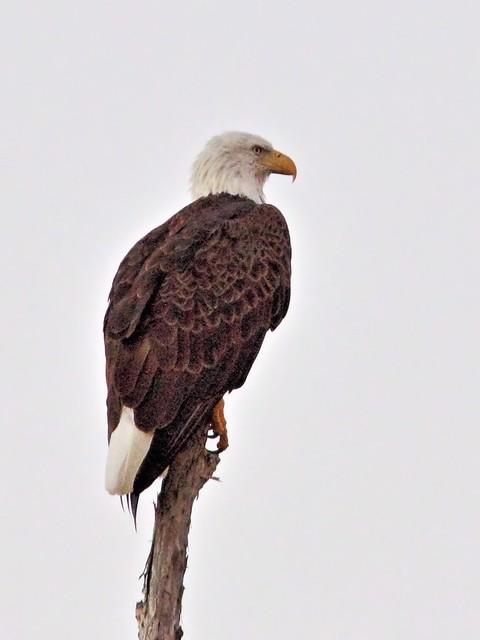
Here, she stands guard at the nest. Their eggs are usually laid in December or early January.
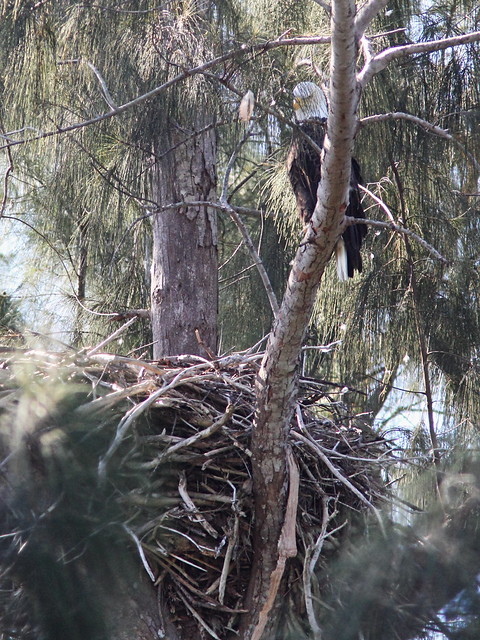
By the middle of October the eagles were adding sticks to their nest. If we have a cold snap it is possible that it will trigger early egg-laying.

Prairie Warbler numbers increased early in the season:
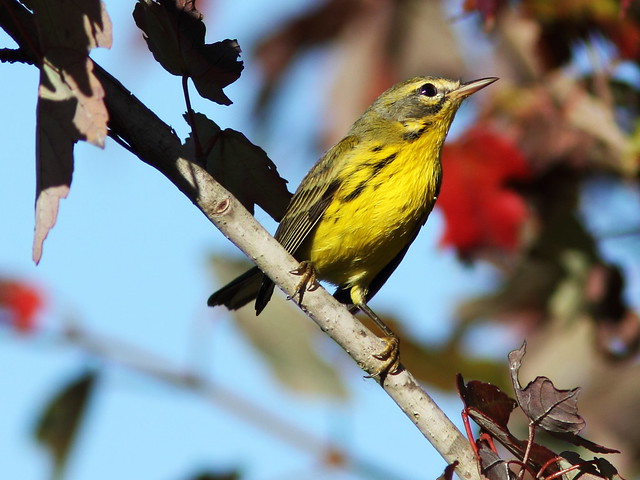
Brown Thrashers, which may breed here in small numbers, also came in early:

Painted Buntings appeared. This was the best shot I could get of a male:
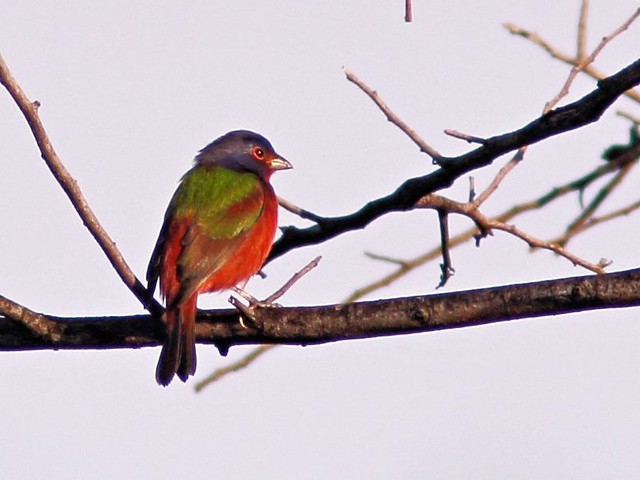
This female bunting was more cooperative:
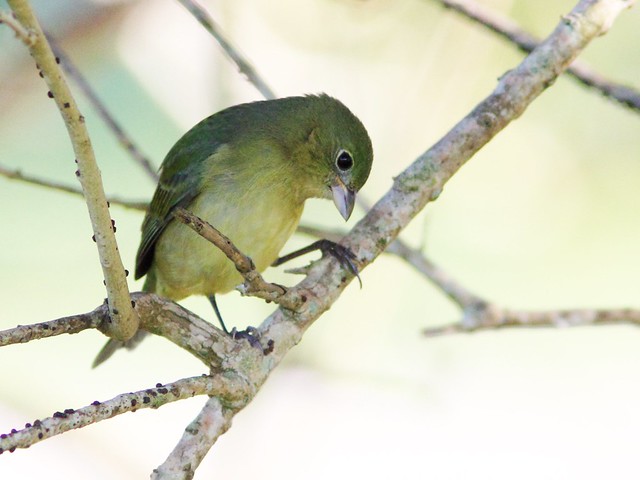
Ovenbirds and waterthrushes were welcome arrivals. Ovenbird:

Northern Waterthrush:

Northern Waterthrush in flight:
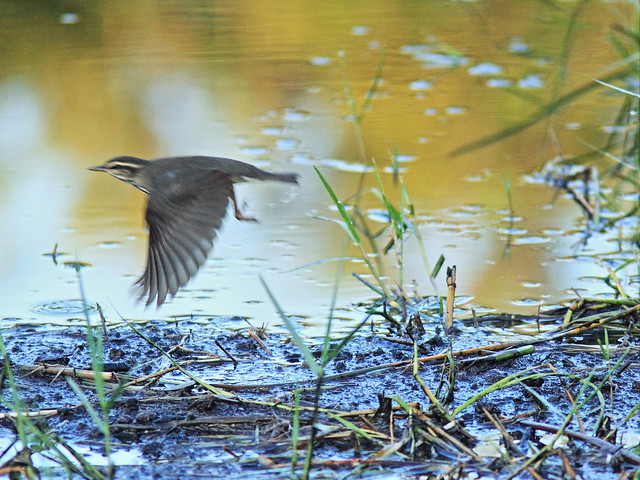
The local population of Loggerhead Shrikes was supplemented by southbound migrants, many of which stay in our neighborhood all winter.

Gray Catbirds appeared in droves during the latter part of September:
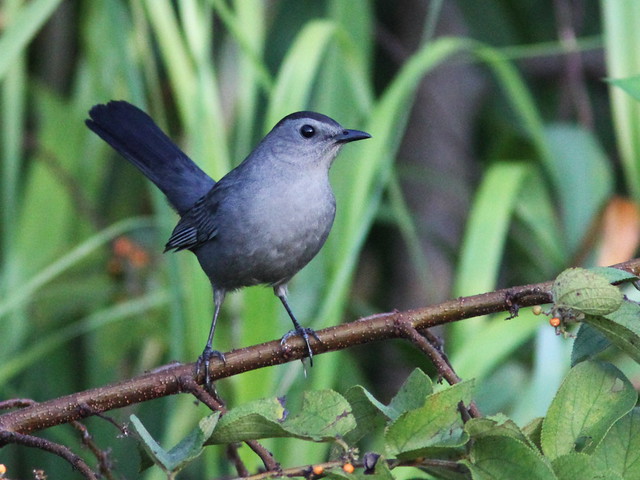
Northern Parulas, one of my favorite warbler species, soon followed...

...as did Red-eyed Vireos:

Generally, when we did see warblers, they were few in number. Worm-eating Warblers are rather uncommon migrants in our wetland preserve:
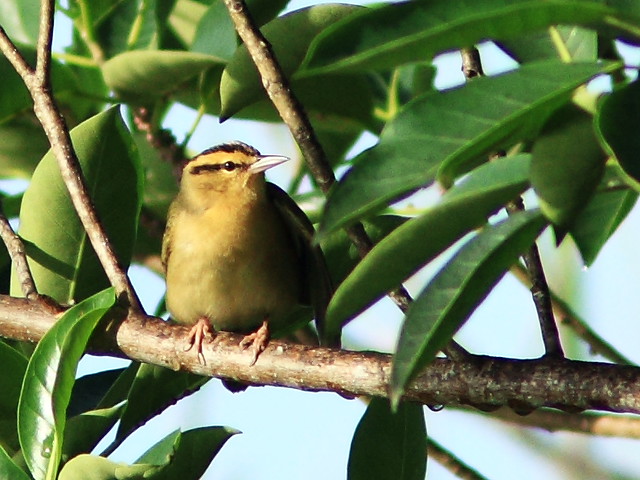
Black-and-white Warblers can show up any time in the fall:

Palm Warblers became abundant in early October. Many will remain here for the winter season, becoming the most abundant dooryard bird, sometimes called "Florida Sparrows."

Cattle Egrets were flocking...
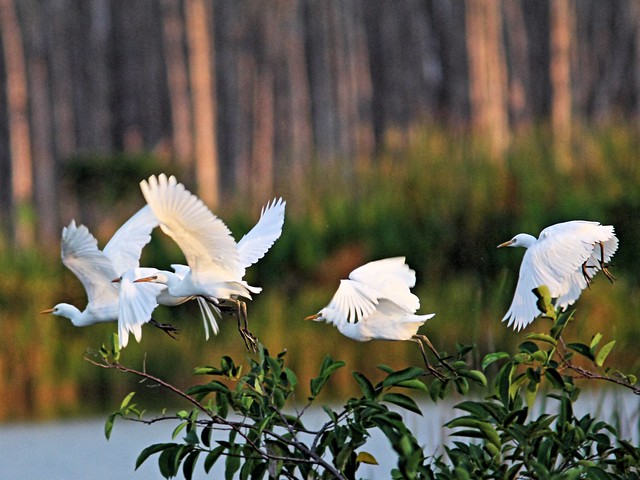
...and Black Vultures congregated in huge numbers:
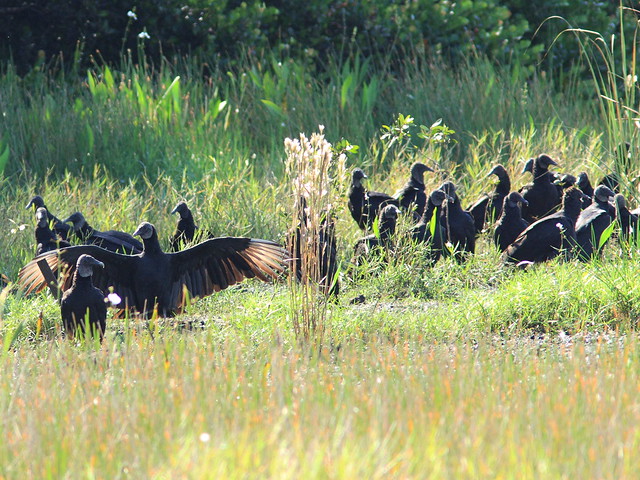
Belted Kingfishers arrived to protect their winter feeding territories along the canal. This is a female; the male lacks the red belly-band:

This female Blue Grosbeak was the first I have seen on our local patch:
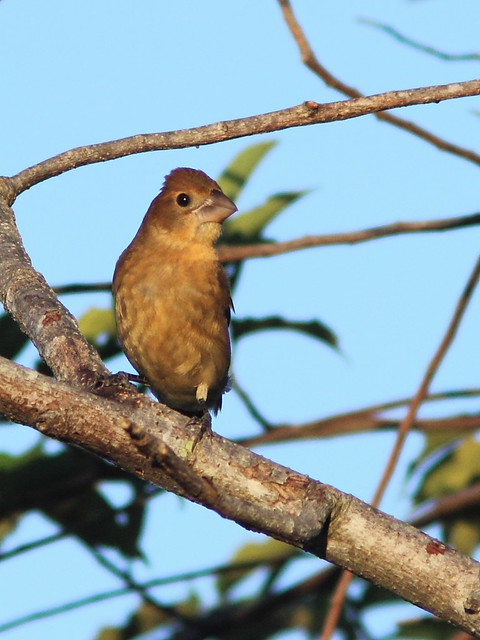
The last time I photographed a Blue Grosbeak was back in the 1990s, through the window of our New Mexico home, digiscoped using a pocket camera and my Kowa spotting scope. This is a male:
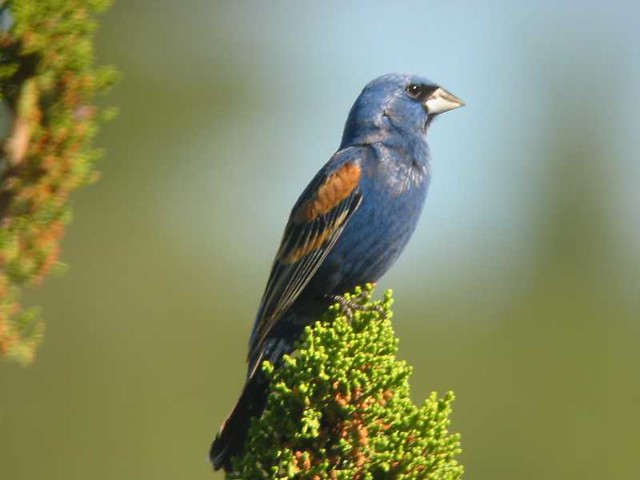
A single day in late October provided the best warblers of the season. Suddenly their numbers increased and we saw a couple of new species. The Bay-breasted Warbler is quite large-- when I first saw it from a distance I thought it was an oriole or tanager.
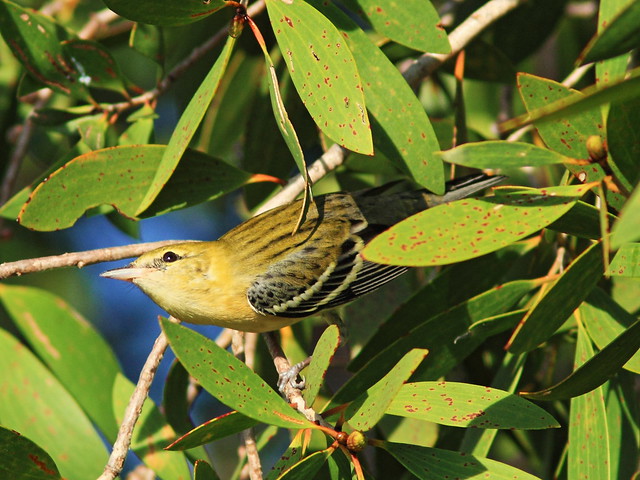
Several Cape May Warblers appeared...


...along with another of my favorites, the Black-throated Blue Warbler.
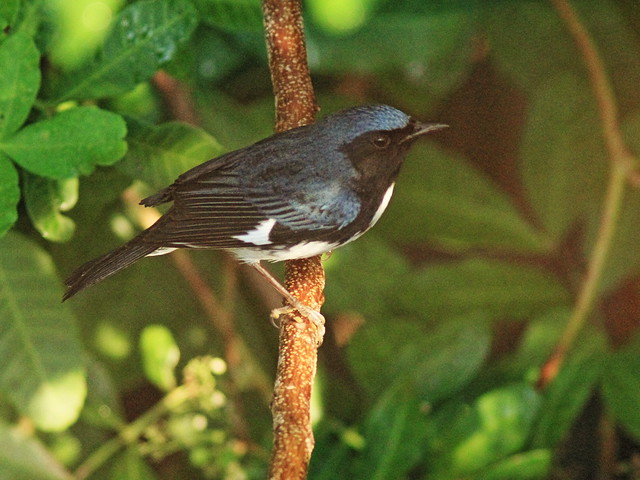
Finally, in mid-November the arrival of the Yellow-rumped Warblers signaled the end of warbler migration.

No comments:
Post a Comment
Thank you for visiting Rosyfinch Ramblings! I will enjoy a visit to your page just as soon as possible. Some anonymous comments and some containing active links may not be accepted.